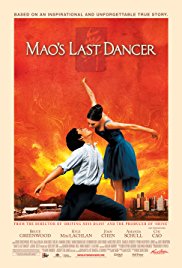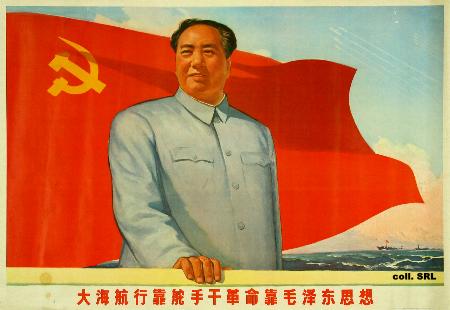Encouraging Students to Read the Book — Discussion and Writing Exercises
Show the film straight through. If you decide to use a movie worksheet to ensure that students pay attention to the movie, use TWM’s Film Study Worksheet for a Work of Historical Fiction, deleting question #7. Teachers who use the movie worksheet may want to stop the film on several occasions to allow students to take notes.
Consider reading to the class the charming seven-page introductory chapter entitled “Wedding.” This may awaken students’ interest in the book. The chapter describes the marriage ceremony of Li Cunxin’s parents and the fortunate story of their life-long love for each other.
An excellent way to access the themes of Cunxin’s autobiography is to examine the parables told in the film and the book. Read the parables from the book or distribute copies of the pages on which the parables appear for students to read. Select from the following assignments, or use them all. The interest generated by the movie or the book will motivate students to do their best on the assignments.
- “The Best Bow Shooter” — On page 211, Teacher Xiao tells Cunxin a story. This is shown in the movie.
1. Teacher Xiao’s fable is important for Cunxin. Write a paragraph describing how Cunxin adopts or rejects the lesson of this fable. Give specific examples.
2. Think of a time in your life when you used or could use the lessons of this fable. Use your narrative writing skills to describe this incident in a short piece of no more than 750 words. Be sure to give your reader a clear picture of the incident that you are describing.
- “The Millet Dream” This parable is not in the movie, but is told by Teacher Xiao on pages 184 & 185. It refers to a theme in both the movie and the book, i.e., to be a success you must push past mere dreaming and do the hard work necessary for achievement. Several times in the film we see Cunxin practicing after hours and doing the extra work that he needs to do to overcome difficulties. There are even more examples in the book.
1. Teacher Xiao tells Cunxin that the story shows how great things will never come through dreaming alone. Cunxin has dreams of success. Is he the scholar in the Millet Dream? What does he do when he begins to despair of achieving his dreams? Write a paragraph about how in the story you can see several times when Cunxin must push past mere dreaming and wishing and hoping and work hard to achieve his desires.
2. Write informally about what in your life is symbolized by the millet soup, something you settle for in place of what you actually want. Or, you can write about an experience when you refused to settle for “the millet soup.”
- “The Frog in the Well” — In the movie and at pages 52 and 53, Cunxin is told this parable by his father, a man who lived all of his life as an impoverished peasant. Before reading this parable, ask students to summarize the “Frog in the Well” parable described in the film and to explain its moral message. Ask students how that message relates to Cunxin’s life. (In the movie, the parable ends after the toad tells the frog that there is a brighter world outside of the well and the frog dreams of going there.) Then, before reading the parable, warn the class that the filmmakers changed this story. After reading the parable, ask the class for ideas about how it is different from the story told in the film. Note to Teachers: Cunxin rejected the Chinese parable told to him by his father. Cunxin’s father spent all his life as a poor peasant in China and he, like a billion other Chinese peasants, may very well have found this parable comforting.
1. Write a brief essay in which you reveal the connection between the story of the “Frog in the Well” and how Cunxin lived his own life. Include in your final paragraph thoughts about how the traditional story could be rewritten in order to account for the fact that there are some characteristics that enable some frogs to escape the confines of their wells.
2. In an informal essay, write about the well in which you live and the glimpses you have had of a world outside of your current perspective and the dreams that you have as a result. You may have had glimpses of life’s potentials through people you have met, lessons you have learned in reading or in films or from the experiences of friends. Stay focused on yourself; what is in your well and what is there for you outside of the well if you escape its confines?
- “The Wuhoo Man’s Cricket Tale” — On pages 64 – 66, Cunxin repeats a story told to the children in his village by an old man named Wuhoo about a cricket.
1. The cricket story is an allegory. Cunxin sees himself as the protagonist of the story in his efforts to release his family from a lifetime of certain struggle. Write an essay in which you compare the life that Cunxin leads to the life of the boy in the story. Think about what the authorities represent in Cunxin’s life, how he feels as if he were in a coffin, and what in his own spirit can save his family.
2. In an informal essay, show how there are elements in your own life that are similar to the lives in the story. You will have to think of symbolic meaning in the emperor, the authorities, the cricket and even the coffin in order to make sense of the tale as it may apply to yourself.
- “The Hunter and the Bird” — On pages 89 and 90, Cunxin recounts the story of a hunter and a bird told to him by his father.
1. Cunxin loves this story for its moral and the bird’s ability to outwit the hunter. Write an essay in which you show how keeping promises and living by one’s wits may have been important in shaping Cunxin’s life. You may want to consider how he may not have lived up to the promise to remain loyal to his country or to his family by defecting to America. How does disloyalty fit into the story which brought the hunter close to death but saved him in the long run?
2. What lesson in this story about the bird and hunter can serve you in your efforts to become the individual you are seeking to become? In what sense can you take a lesson from the actions of the hunter or of the bird in order to shape your life? Metaphorically, you may see yourself as the hunter. In this case, what do the bird and the hunter represent?





